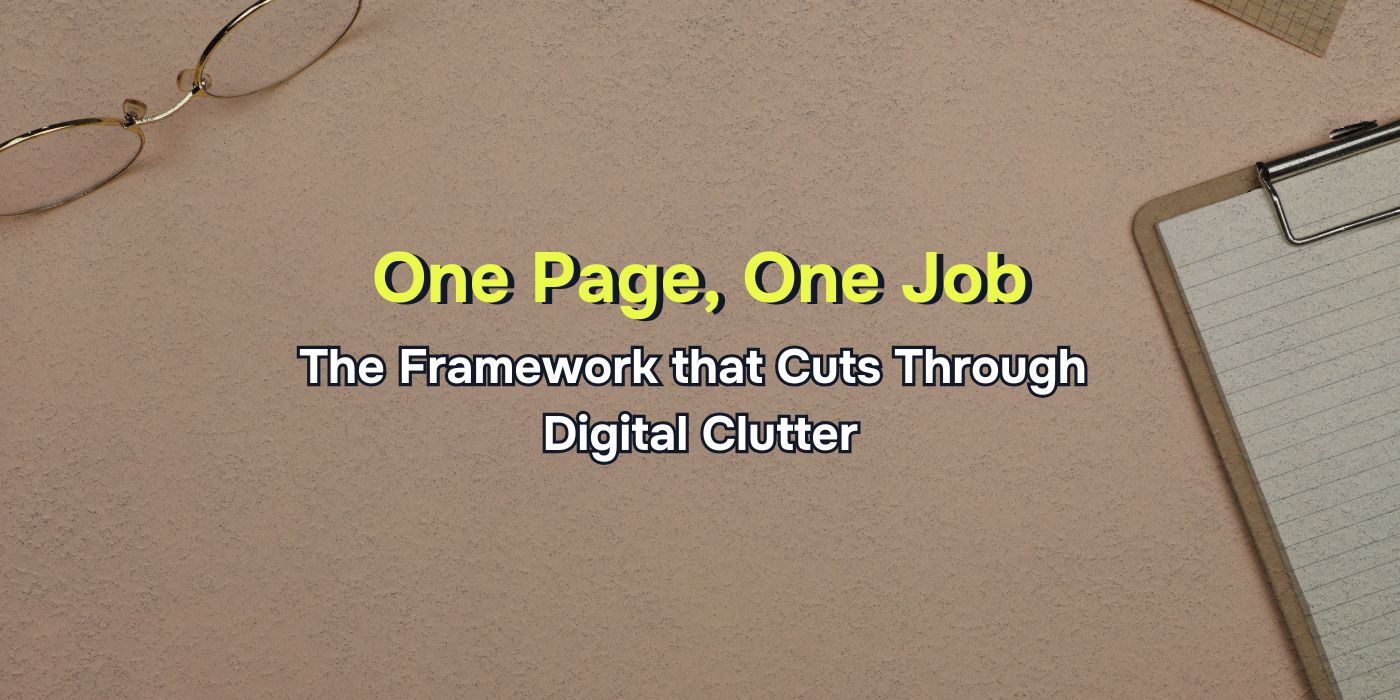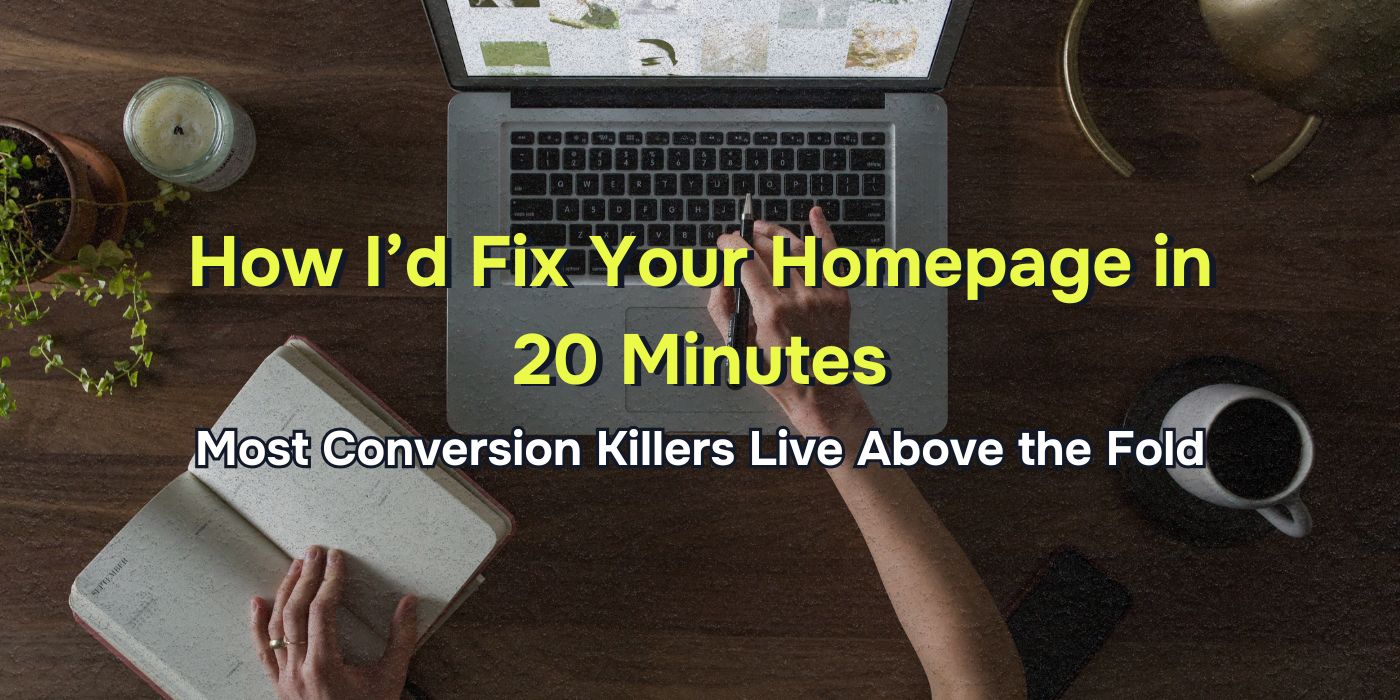Key Takeaways
- People don’t buy your service — they buy what it does for them. List outcomes, not offerings. Sell the solution, not the tool.
- Your customer is the hero — you’re just the guide. Position your business as the bridge between where they are and where they want to be.
- Rework every piece of copy to focus on transformation. Shift from “what we do” to “what you get,” and your marketing becomes instantly more compelling.
- Outcomes belong everywhere — not just in the headline. Service pages, CTAs, FAQs, testimonials — every section should reinforce what life looks like after they choose you.
You’ve heard the line before: “People don’t want a drill. They want a hole in the wall.” It’s a cliché in marketing for a reason — because most companies still get it wrong.
Too many businesses lead with features, specs, and service lists when what people actually care about is the outcome. Not what you do, but what it does for them.
That’s why Home Depot doesn’t need to convince you how many RPMs a drill has. They show you the perfectly mounted shelf, the cleanly hung artwork, the finished project. They sell the end result — and let the tools be a means to that end.
If your marketing feels like it’s not converting, there’s a good chance you’re selling drills instead of holes. Here’s how to flip that.
Step 1: Stop Describing Services. Start Solving Problems.
Let’s say you’re a roofing company. Your homepage says:
“We offer asphalt shingles, metal roofing systems, and leak repairs.”
Cool. So do 10 other companies in your zip code.
Now say this instead:
“Sleep soundly knowing your roof will hold up in the next Florida storm.”
That’s the outcome. That’s the reason someone is Googling roofers at 2AM after hearing a drip. It’s not about materials — it’s about peace of mind, protection, and fixing the thing that’s ruining their day. Every offering you list should map to a transformation. If it doesn’t, you’re selling parts, not progress.
Step 2: Make Your Buyer the Hero — Not You
No one wants to hear about how long you’ve been in business, how many awards you’ve won, or how “dedicated to excellence” you are. At least, not until they know you understand their pain.
Start with their world. Their frustration. Their desired outcome. You’re not the star — you’re the guide. The hardware store doesn’t take credit for your perfectly hung picture. They just sell you what you need to make it happen.
The same goes for your business: position yourself as the path to the result, not the focus of the story.
Step 3: Rework Your Copy From “What We Do” to “What You Get”
Go through your site and marketing materials and look for every phrase that starts with:
- “We offer…”
- “Our services include…”
- “We specialize in…”
Now ask: So what? What does that actually mean for the customer?
- Change “We offer pressure washing for driveways” to: “Make your driveway look brand new — in under an hour.”
- Change “We design websites” to: “Get more leads from a site that finally looks like your business.”
The best marketing copy doesn’t list what’s for sale. It paints a picture of the life your customer will have after they buy.
Step 4: Reinforce Outcomes in Every Section — Not Just Headlines
Too often, businesses nail the value in the headline, then drop into a bullet list of offerings and lose the thread. Don’t stop selling the outcome after the first scroll.
In your service descriptions, testimonials, FAQs, and CTAs — keep connecting the dots between what you do and what it does.
For Example:
Service: Lawn fertilization
Outcome-driven version: “Keep your grass thick, green, and weed-free — without guessing what product to use.”
Even your CTA can do it:
Instead of “Contact us,” say: “Get a free quote and take lawn care off your weekend to-do list.” You’re not just offering a service. You’re offering saved time, a cleaner house, a quieter life, a solved problem.
Expert Tips: How to Train Your Brain to Think in Outcomes
1. Ask “Why?” at least three times.
If you say you offer gutter cleaning, ask: Why? → To remove buildup. Why? → To prevent overflow. Why? → To protect the home’s foundation. Boom — that’s the real outcome.
2. Use before-and-after copy.
Show the shift. “Before: weeds everywhere. After: a thick, healthy lawn you don’t have to think about.”
3. Interview your best customers.
Ask them what changed after hiring you. The answers won’t be “I got a new HVAC unit.” They’ll be things like “My energy bill dropped” or “My house finally stays cool in summer.”
4. Remember: no one wants your service — they want what it fixes.
Whether you’re selling software, a landscaping plan, or a dental cleaning, the goal is always the same: make life easier, better, cleaner, simpler.
Final Thought
If your marketing is stuck, check what you’re actually selling.
Are you pushing features, specs, and services? Or are you painting a picture of life on the other side?
People don’t want the drill. They want the hole.
Sell the hole. Sell the picture on the wall. Sell what they get — not just what you do.
Because that’s what they’re really paying for.
FAQs
Can I still mention features or services?
Absolutely — just don’t lead with them. Start with the result, then explain how your service gets them there. Features support the outcome, not the other way around.
How do I figure out the real outcomes my customers care about?
Talk to them. Ask what changed after hiring you or what problem led them to look for help. Their words are often better than any copy you could write.
What if I offer a technical or complex service?
It’s even more important. Simplify the outcome. Your client doesn’t care about the process — they care about the result: faster service, lower costs, less stress, better performance.





